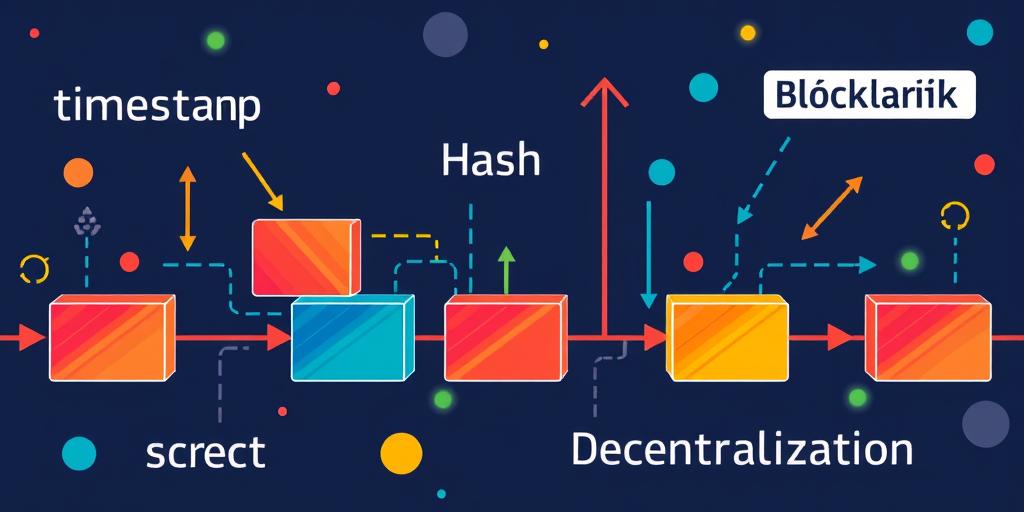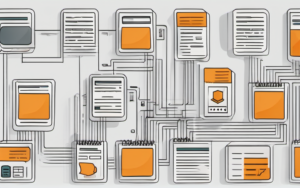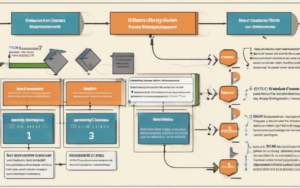Imagine a digital ledger that’s shared across a vast network of computers, where every transaction is recorded and permanently stored. This is the essence of blockchain technology, a revolutionary innovation that’s disrupting industries and redefining trust in the digital world.
Blockchain: The Foundation of Decentralized Trust
What is Blockchain?
At its core, blockchain is a distributed, immutable ledger that securely records and verifies transactions. Think of it as a chain of blocks, each block containing a set of transactions that have been verified and added to the chain. This chain is constantly growing as new transactions are recorded and added to the latest block.
The Core Concepts: Blocks, Chains, and Transactions
Each block in a blockchain contains a group of transactions, along with a timestamp and a unique identifier called a hash. This hash is a cryptographic signature that represents the entire block’s contents. Once a block is added to the chain, it’s linked to the previous block through its hash, creating a secure and tamper-proof chain of blocks.
Decentralization: The Power of Distributed Ledgers
Unlike traditional databases that are controlled by a single entity, blockchain is decentralized. This means the ledger is distributed across multiple computers, with no single point of control. This eliminates the risk of manipulation or censorship, as all participants have a copy of the ledger and can verify the integrity of transactions.
Understanding the Blockchain Process
Transaction Initiation and Validation
When a transaction is initiated, it’s broadcast to the network of computers participating in the blockchain. These computers, known as nodes, verify the transaction’s legitimacy, ensuring that the sender has sufficient funds and that the transaction is valid.
Block Creation and Mining
Once a transaction is validated, it’s bundled with other validated transactions into a block. The process of adding a new block to the chain is known as “mining,” where computers solve complex mathematical problems to verify the block’s authenticity. This process also ensures the security of the blockchain by making it extremely difficult for malicious actors to manipulate the data.
Block Verification and Addition to the Chain
After a block is mined, it’s broadcast to the network for verification. If a majority of nodes agree on the block’s validity, it’s added to the chain, making it permanent and immutable.
Immutability and Security
The immutable nature of blockchain means that once a transaction is added to the chain, it cannot be altered or deleted. This ensures the integrity and security of the data, making it highly resistant to fraud and manipulation.
Key Features of Blockchain Technology
Transparency and Traceability
Blockchain transactions are transparent and traceable, allowing anyone to view the history of all transactions on the network. This transparency fosters trust and accountability.
Security and Tamper-Proof Records
The decentralized and immutable nature of blockchain makes it inherently secure. The use of cryptography ensures that data is encrypted and protected from unauthorized access.
Decentralization and Trust
Decentralization is a key pillar of blockchain technology. It eliminates the need for a central authority, promoting trust and reducing reliance on intermediaries.
Efficiency and Automation
Blockchain automates many processes, such as transaction verification and settlement. This can significantly improve efficiency and reduce costs.
Applications of Blockchain Beyond Cryptocurrencies
While blockchain is often associated with cryptocurrencies like Bitcoin, its potential extends far beyond digital currencies. Here are just a few examples:
Supply Chain Management
Blockchain can be used to track the movement of goods through the supply chain, providing transparency and accountability. This can help businesses improve efficiency, reduce fraud, and enhance consumer trust.
Healthcare Records
Blockchain can securely store and manage patient health records, providing a tamper-proof and accessible system for healthcare providers.
Voting Systems
Blockchain can create secure and transparent voting systems, eliminating the risk of fraud and ensuring that every vote is counted.
Digital Identity
Blockchain can be used to create secure and verifiable digital identities, providing individuals with control over their personal data.
The Future of Blockchain Technology
Emerging Trends and Innovations
The blockchain space is constantly evolving, with new innovations emerging regularly. These include advancements in scalability, privacy, and interoperability.
Challenges and Opportunities
While blockchain offers tremendous potential, there are also challenges to overcome. These include scalability, regulatory uncertainty, and the need for widespread adoption.
The Potential Impact on Various Industries
Blockchain has the potential to revolutionize a wide range of industries, from finance to healthcare to supply chain management. As the technology matures, we can expect to see even more innovative applications emerge.
The decentralized nature of blockchain is driving a paradigm shift in how we trust and interact with data. From secure and transparent transactions to innovative applications across industries, blockchain is poised to play a transformative role in the future.




